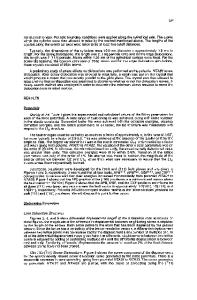Embedded atom calculations of unstable stacking fault energies and surface energies in intermetallics
- PDF / 176,594 Bytes
- 7 Pages / 612 x 792 pts (letter) Page_size
- 95 Downloads / 420 Views
MATERIALS RESEARCH
Welcome
Comments
Help
Embedded atom calculations of unstable stacking fault energies and surface energies in intermetallics D. Farkas Department of Materials Science and Engineering, Virginia Polytechnic Institute and State University, Blacksburg, Virginia 24061
S. J. Zhou Theoretical Division and Center for Nonlinear Studies, Los Alamos National Laboratory, Los Alamos, New Mexico 87545
C. Vailh´e, B. Mutasa, and J. Panova Department of Materials Science and Engineering, Virginia Polytechnic Institute and State University, Blacksburg, Virginia 24061 (Received 12 June 1995; accepted 8 July 1996)
We performed embedded atom method calculations of surface energies and unstable stacking fault energies for a series of intermetallics for which interatomic potentials of the embedded atom type have recently been developed. These results were analyzed and applied to the prediction of relative ductility of these materials using the various current theories. Series of alloys with the B2 ordered structure were studied, and the results were compared to those in pure body-centered cubic (bcc) Fe. Ordered compounds with L12 and L10 structures based on the face-centered cubic (fcc) lattice were also studied. It was found that there is a correlation between the values of the antiphase boundary (APB) energies in B2 alloys and their unstable stacking fault energies. Materials with higher APB energies tend to have higher unstable stacking fault energies, leading to an increased tendency to brittle fracture.
I. INTRODUCTION
Achieving materials with high strength and good toughness has been one of the major goals in the materials research field. However, the understanding of these properties, in particular at the microscopic level, is still not satisfactory. A valuable key in the approach to the toughness problem is to distinguish between an intrinsically brittle material and an intrinsically ductile one. This is very important in designing new materials such as intermetallics for high temperature structural use. The brittle versus ductile behavior of materials is determined by several factors such as interatomic force laws, crystal structures, microstructures of materials, and external environments. In 1974, Rice and Thomson1 proposed a semiquantitative criterion for determining the intrinsic ductile versus brittle behavior of materials in terms of the competition between crack cleavage and dislocation emission from a crack tip. In 1992, Rice2 extended this analysis by improving the description of the early stages of dislocation nucleation on the basis of the Peierls concept. Dislocation nucleation is characterized by the unstable stacking energy, gus , which is the maximum energy barrier encountered in blocklike sliding along the slip plane, of one-half of the crystal relative to the other. In J. Mater. Res., Vol. 12, No. 1, Jan 1997
http://journals.cambridge.org
Downloaded: 16 Mar 2015
that model, the criterion for dislocation emission is as follows: q (1) Ke 2gus ms1 1 ndY, where Ke is the critical st
Data Loading...











